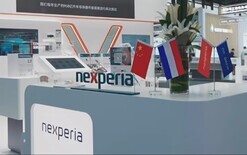Innovation action welcomed

ITS New Zealand (ITNSZ) has welcomed the government including a new section in Aotearoa’s second emissions plan (ERP2) that’s focused on technology and innovation.
The organisation is also pleased to see more information on how it will monitor progress to ensure the country stays on track thanks to consultation feedback.
ITSNZ has outlined key inclusions about transport, technology and innovation. These include removing market barriers to encourage new technology to be trialled in New Zealand.
Others are the low-emissions heavy vehicle fund, which can encourage early adoption of technology in this sector, transitioning the light fleet to road-user charges and away from fuel tax by 2027, and legislation to set up time-of-use schemes.
ITSNZ, which submitted on the draft ERP2 on behalf of its members in August 2024, also highlights:
• International co-operation to prepare us to use new technologies as they become available, especially for aviation and shipping.
• Major public-transport projects in Auckland, including the city rail link, Eastern Busway, Northwest Rapid Transit, Auckland airport to Botany busway, and rail upgrades in the lower North Island.
• Making better use of existing public-transport infrastructure, introducing new technologies to optimise networks and services, and integrating transport investment with housing and land-use planning in our main cities.
• Encouraging innovative approaches for the roll-out of buses and related infrastructure.
Armin Guttke, pictured, chairman and president of ITSNZ, says: “It is encouraging to see the government take a technology-led approach to maximise emissions reduction for our country.
“We support the least-cost, net-based and market-led direction of this plan. It’s reassuring to see complementary government actions, and policies relating to co-investment and the removal of regulatory barriers that encourage investment in enabling technology and innovation.
“The inclusion of enabling technology and innovation lays the groundwork and path forward for a more sustainable and smarter transport system that supports productivity and economic growth.”
ERP2 comes into effect on January 1, 2026, to meet the second emissions budget for 2026-30.





